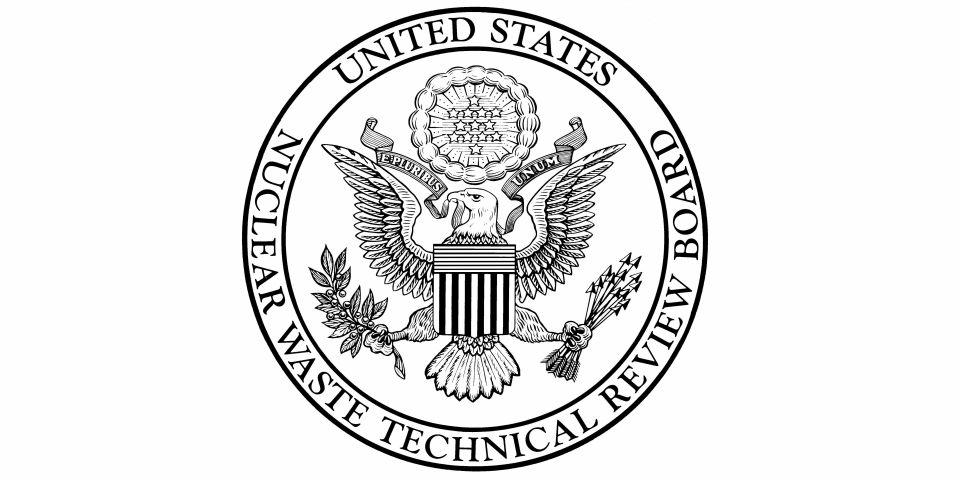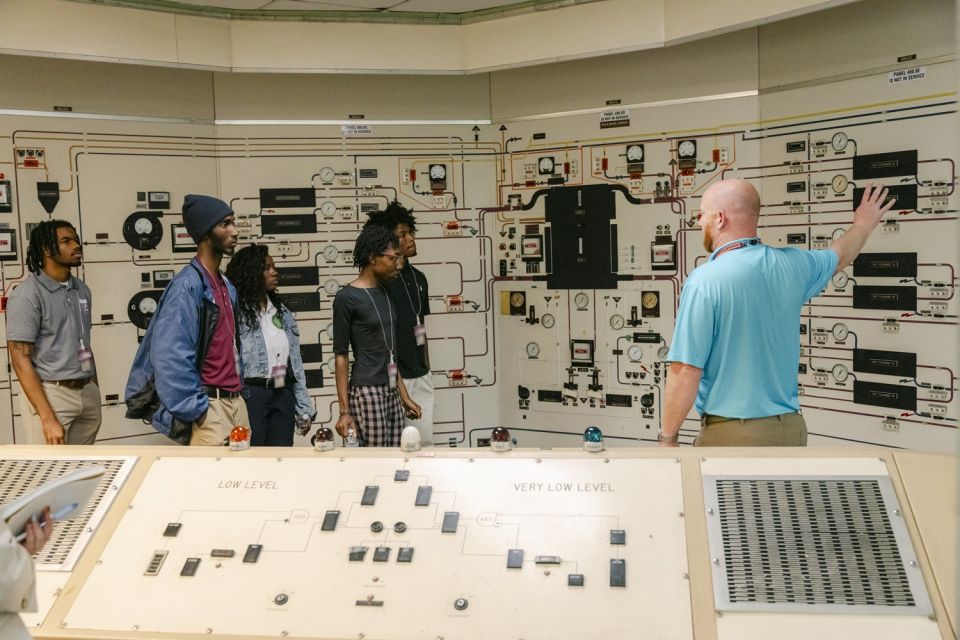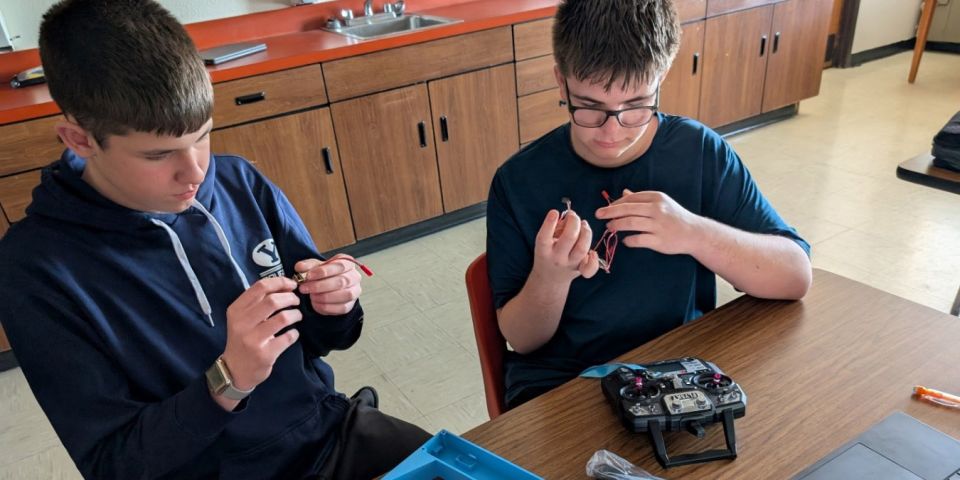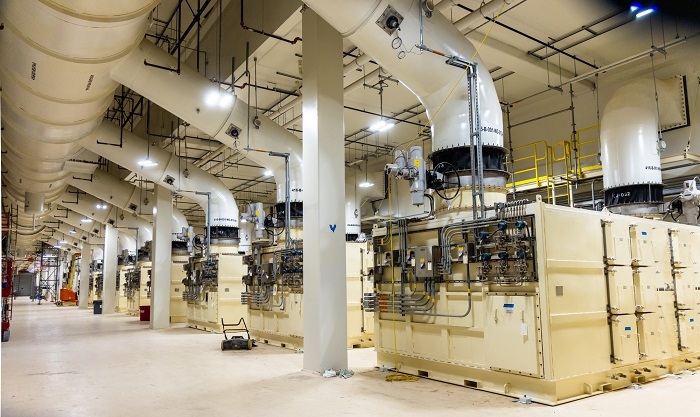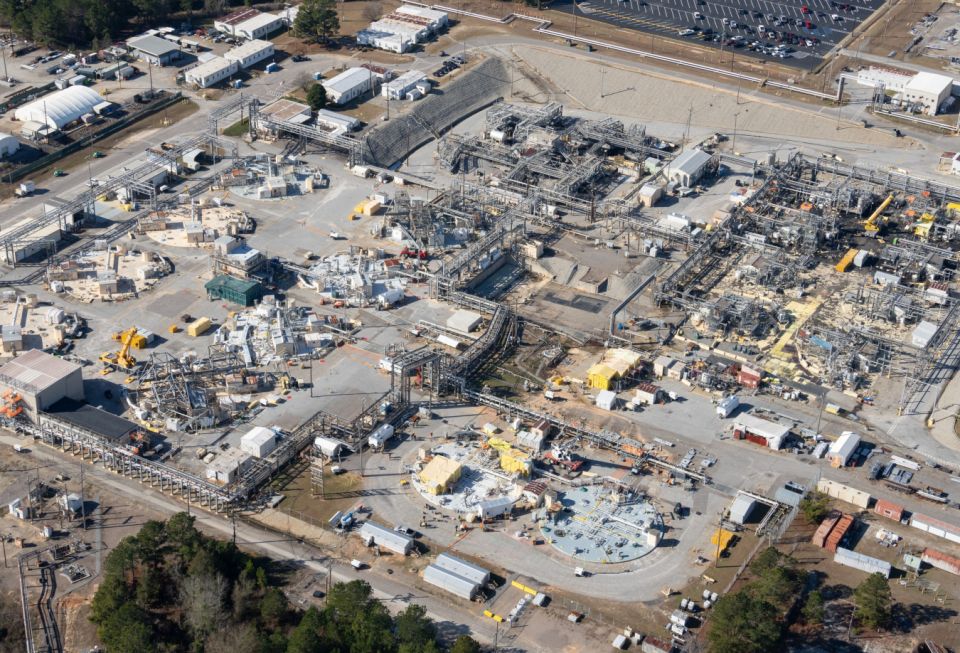SRS liquid waste contractor Savannah River Mission Completion will use drones equipped with cameras to inspect the cleaning status of waste tanks at the site. (Photo: DOE)
The Department of Energy’s Office of Environmental Management will begin using drones for the first time to internally inspect radioactive liquid waste tanks at the department’s Savannah River Site in South Carolina. Inspections were previously done using magnetic wall-crawling robots.
DOE-EM announced on September 3 that it has purchased four Flyability Elios 3 model drones for the SRS tank inspection program. According to the office, the drones provide the program more flexibility and capability, as the aircraft can cover more area than a magnetic crawler—and can do so more quickly. Additionally, the drones are equipped with 3D-scanning light detection and ranging equipment, which can generate precise 3D scans of the tank and its waste.
The drones will initially be used to inspect the waste tanks’ annulus, which provides secondary containment and protection for these tanks in the event of a leak. SRS has a total of 51 underground carbon-steel tanks—eight of which have been operationally closed—that were built to contain radioactive liquid waste generated by the site’s processing of nuclear materials. About 34.5 million gallons of waste remain in the tanks.
“DOE wants to ensure we can ultimately close the remaining 43 liquid waste tanks at SRS in a safe manner,” said Jim Folk, DOE–Savannah River Operations Office assistant manager for waste disposition. “With the help of drones, we can advance our work to complete the liquid waste mission by 2037.”
The drones: The Elios 3 is a 19-inch-diameter drone with four helicopter-like propellers, a high-definition camera, a thermal camera, and additional features that DOE-EM said will benefit the tank inspection program. The four remote-controlled drones purchased for the project, which have advanced stability features that make them easier to maneuver in flight, are all designed to fly in confined spaces thanks to a protective cage that shields the propellors and cameras from potential collisions.
According to DOE-EM, the Elios 3 model has undergone extensive radiation exposure testing at the Idaho National Laboratory, which determined the level of radiation exposure the drone is able to withstand before experiencing a failure. That level was judged to be adequate for the needs of the liquid waste program.
Next steps: Before work with the drones can begin, all administrative and regulatory requirements must be satisfied, DOE-EM said. Pilots are required to be trained on drone operations, followed by advanced training on successfully navigating the environment of a waste tank and learning best practices for planning flights for optimal results.
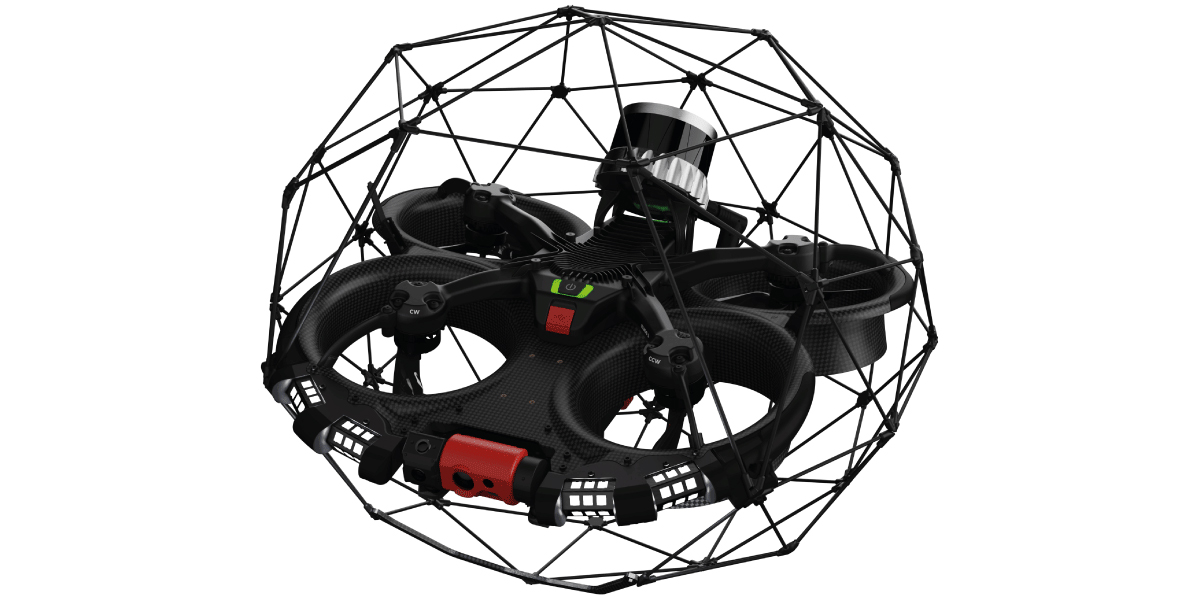


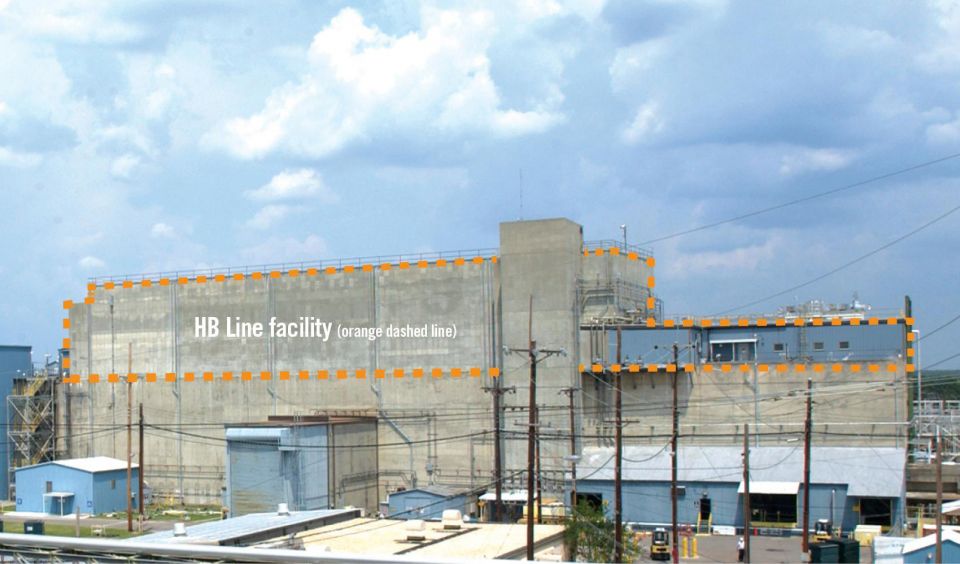
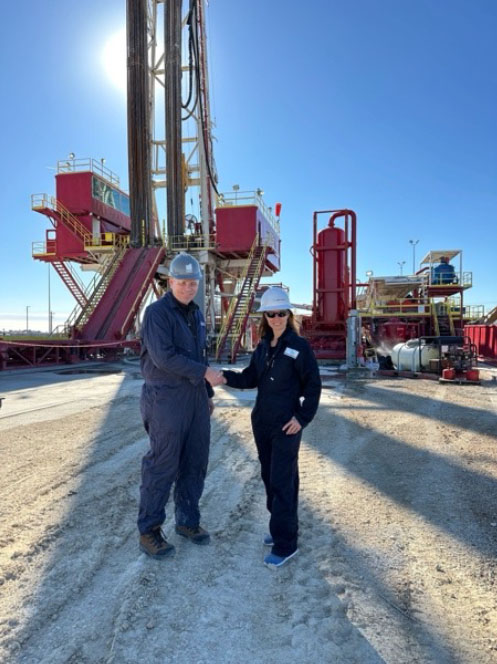.jpg)

